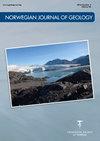求助PDF
{"title":"Potential secondary events caused by early Holocene paleoearthquakes in Fennoscandia – a climate-related review","authors":"O. Eldholm, H. Bungum","doi":"10.17850/NJG101-2-3","DOIUrl":null,"url":null,"abstract":"© Copyright the authors. This work is licensed under a Creative Commons Attribution 4.0 International License. During the last deglaciation of Fennoscandia, large earthquakes may have induced secondary effects on the high-latitude coastal regions and continental margins primarily from surface rock avalanches, large and small submarine slides, local and regional flooding, and tsunamis. In this overview, we show that the climate-earthquake-slide-tsunami causal sequence is particularly important, as is structural inheritance and rejuvenation. However, there are potential earthquake-generating early Holocene faults also beyond the previously defined Lapland Fault Province. Thus, we introduce the term the Greater Lapland Fault Province. Earthquakes in the expanded fault province are candidates for triggering the 8.1 ka Storegga Megaslide and/or its predecessors and coeval tsunamis. The events might have released other submarine slides, gas hydrate expulsion leaving large pockmark fields and rock avalanches and submarine mass wasting in fjord and lake settings. Moreover, seismic events may also have triggered local and regional flooding by breakup of ice and sediment barriers.","PeriodicalId":49741,"journal":{"name":"Norwegian Journal of Geology","volume":" ","pages":""},"PeriodicalIF":0.8000,"publicationDate":"2021-06-07","publicationTypes":"Journal Article","fieldsOfStudy":null,"isOpenAccess":false,"openAccessPdf":"","citationCount":"1","resultStr":null,"platform":"Semanticscholar","paperid":null,"PeriodicalName":"Norwegian Journal of Geology","FirstCategoryId":"89","ListUrlMain":"https://doi.org/10.17850/NJG101-2-3","RegionNum":4,"RegionCategory":"地球科学","ArticlePicture":[],"TitleCN":null,"AbstractTextCN":null,"PMCID":null,"EPubDate":"","PubModel":"","JCR":"Q2","JCRName":"Earth and Planetary Sciences","Score":null,"Total":0}
引用次数: 1
引用
批量引用
芬诺斯坎迪亚全新世早期古地震引起的潜在次生事件——气候相关综述
©版权归作者所有。本作品获得知识共享署名4.0国际许可。在芬诺斯坎迪亚最后一次冰川消融期间,大地震可能对高纬度沿海地区和大陆边缘产生了次生影响,主要来自地表岩石雪崩、大小海底滑坡、局部和区域洪水以及海啸。在这篇综述中,我们表明气候-地震-滑坡-海啸的因果序列尤其重要,结构的继承和复兴也是如此。然而,在先前定义的拉普兰断层带之外,也存在潜在的地震产生的全新世早期断层。因此,我们引入了“大拉普兰断层省”一词。断层扩大区的地震可能引发8.1 ka Storegga大滑坡和/或其前身以及同时代海啸。这些事件可能释放了其他海底滑坡、天然气水合物排出,留下了巨大的坑洼区和岩石雪崩,以及峡湾和湖泊环境中的海底物质浪费。此外,地震事件也可能因冰和沉积物屏障的破裂而引发局部和区域洪水。
本文章由计算机程序翻译,如有差异,请以英文原文为准。


